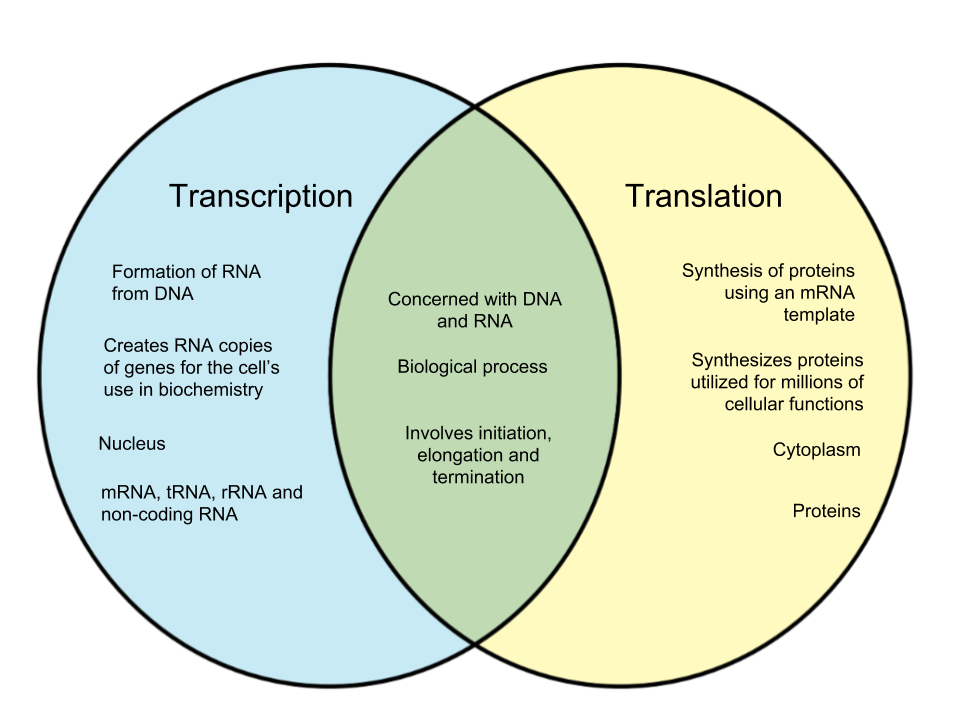Difference Between Transcription and Translation
Transcription and translation are two terms in biology that are easily confused. This is mainly because of their similarity in form and sound. Here, we will discuss how transcription and translation are different from each other.
Transcription[edit]
Transcription is the formation of RNA from DNA. The DNA’s code is converted into a complementary RNA code to use in biochemistry. This process occurs within the nucleus in eukaryotes and the cytoplasm in prokaryotes. Out of four ribo-nucleoside triphosphate types, three kinds of RNAs are created. The four stages of translation are pre-initiation, initiation, elongation, and termination.
Translation[edit]
Translation is the process of synthesizing apolypeptide over ribosome from an mRNA template. 20 types of amino acids and all three types of RNAs are used in translation. Unlike transcription, translation does not require splicing. The proteins made out of translation is utilized for different cellular functions in the body.
| Transcription | Translation | |
|---|---|---|
| Meaning | The formation of RNA from DNA | The synthesis of proteins using an mRNA template |
| Purpose | To create RNA copies of genes for the cell’s use in biochemistry | To synthesize proteins utilized for millions of cellular functions |
| Steps | Pre-initiation, initiation, elongation, termination | Activation, initiation, elongation, termination |
| Occurs in | Nucleus | Cytoplasm |
| Products created | mRNA, tRNA, rRNA and non-coding RNA | Proteins |
| Localization | Prokaryotes’ cytoplasm, eukaryote’s nucleus | Prokaryotes’ cytoplasm, eukaryotes’ ribosomes |
| Initiation stage | RNA polymerase binds to DNA’s promoter, then forms a transcription initiation complex | Ribosome subunits, t-RNA and initiation factors bind the mRNA near the AUG start codon |
| Termination stage | The transcript is released, polymerase separates from DNA, and DNA rewinds into a double helix | As soon as the ribosome reaches the stop codons, the ribosome is disassembled, leading to the release of polypeptide |

